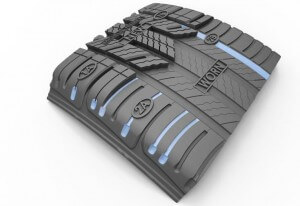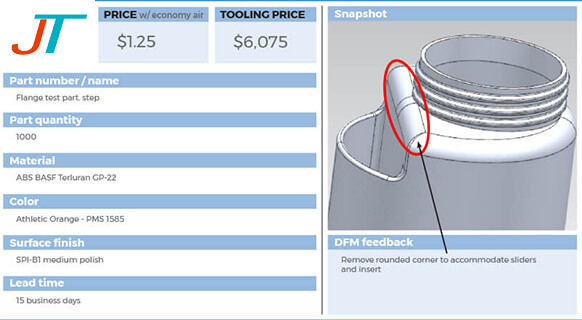Overmolding
Overmolding is a plastic injection molding process which is very useful for producing multi-material parts with some unique properties.
Overmolding is the process of taking a part and then using plastic injection molding to add additional layers over the current part. With overmolding, you essentially take two different plastics and combine them into one part. Traditionally, it starts with injection molding a hard plastic resin that has a higher melting point. Then, once that part is cooled, another plastic resin is injection molded over the first part. Usually this is to create a grip or accents on the original part.
Typical Applications of Overmolding
To help clarify how overmolding is used in parts manufacturing, here are some examples of how the process is applied:
- Over Plastic – It’s possible to overmold plastic onto plastic. First the primary, more rigid plastic component is molded and then the more durable plastic is molded over the previous plastic part.
- Over Metal – Overmolding plastic onto metal is often used for making plastic handles on metal tools and components. It’s a similar process in which plastic is molded over the metal part.
What are the benefits of Overmolding?
Saves money and time
One of the biggest benefits of overmolding is saving money and time. Since it can be completed with two runs through our in-house injection molding process at Jintai Mold, it’s not necessary to outsource the overmolding as a secondary process at another facility. That means there is a cost and time savings by not having to schedule additional outside production.
Doesn’t require additional adhesive
This also can save quite a bit of money. By overmolding, the two pieces are bonded together without adhesive. Otherwise, you would have to setup an additional manufacturing run to attach the two pieces together with adhesive. You would also have to make sure the adhesive is compatible with the two materials, or else the parts will degrade and fall apart.
Different textures and design
With overmolding, you can combine two different types of plastic resins onto one part. This means you can have a rigid plastic body and then overmold soft silicone grips onto areas that an end user would grab, such as the handle of a tool. You also can overmold different plastic resins to have two very different textures and aesthetic design. For example, we overmolded a tire showroom display for a customer. The “rubber tread” material was molded over the harder, blue piece (substrate) that represents “water” in the tread. (Read this Overmolding Case Study ).
Are there special considerations for overmolding?
Overmolding vs Insert Molding
- Fast mold and part quote
- Low cost, high quality and fast turnaround
- Mold frame sharing technology
- Online project management
- Trouble-free part modifications
- Any commercially available material and surface finish
Overmolding Services








